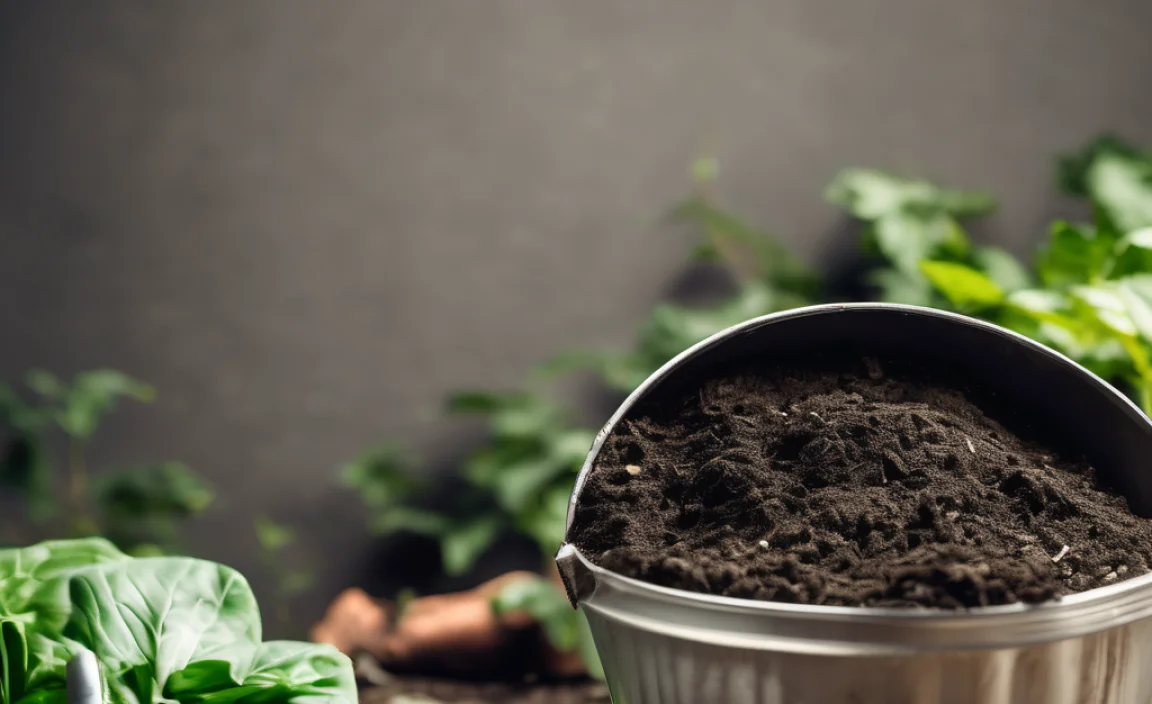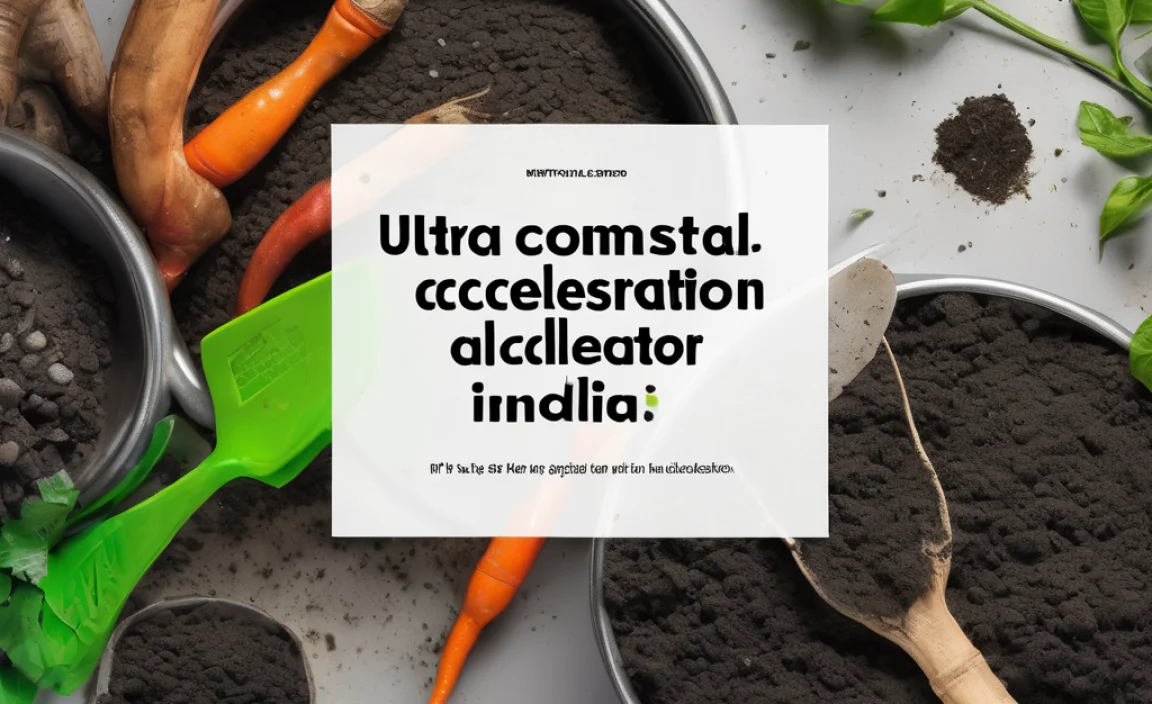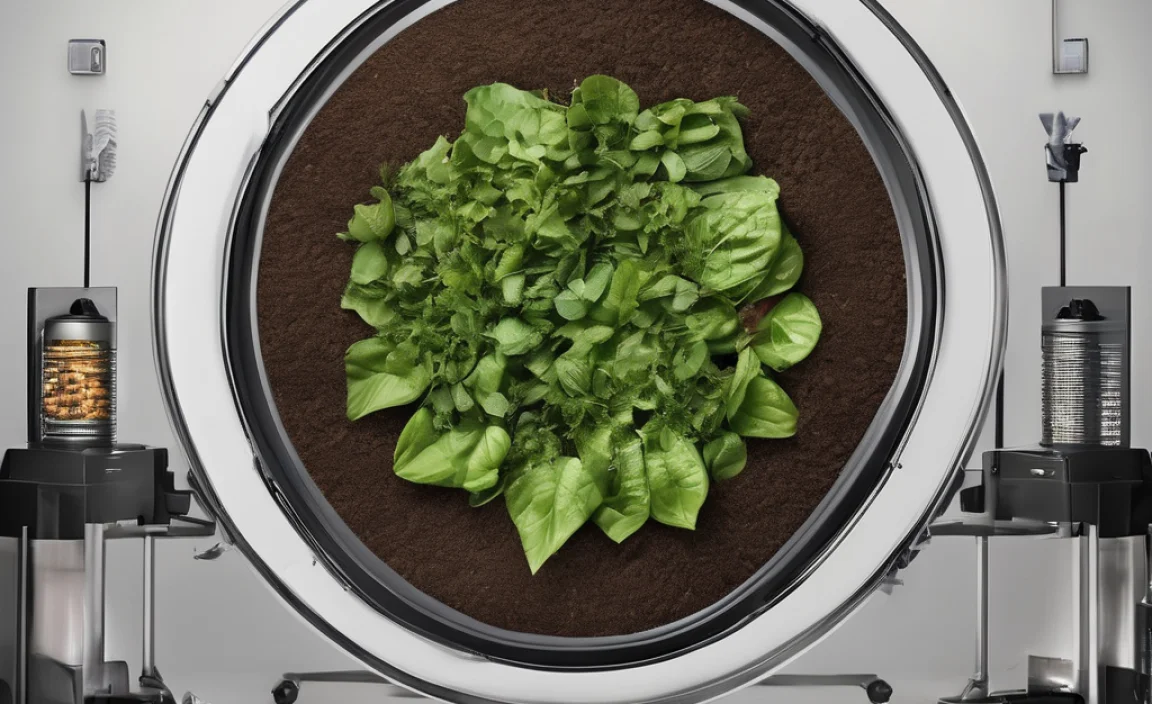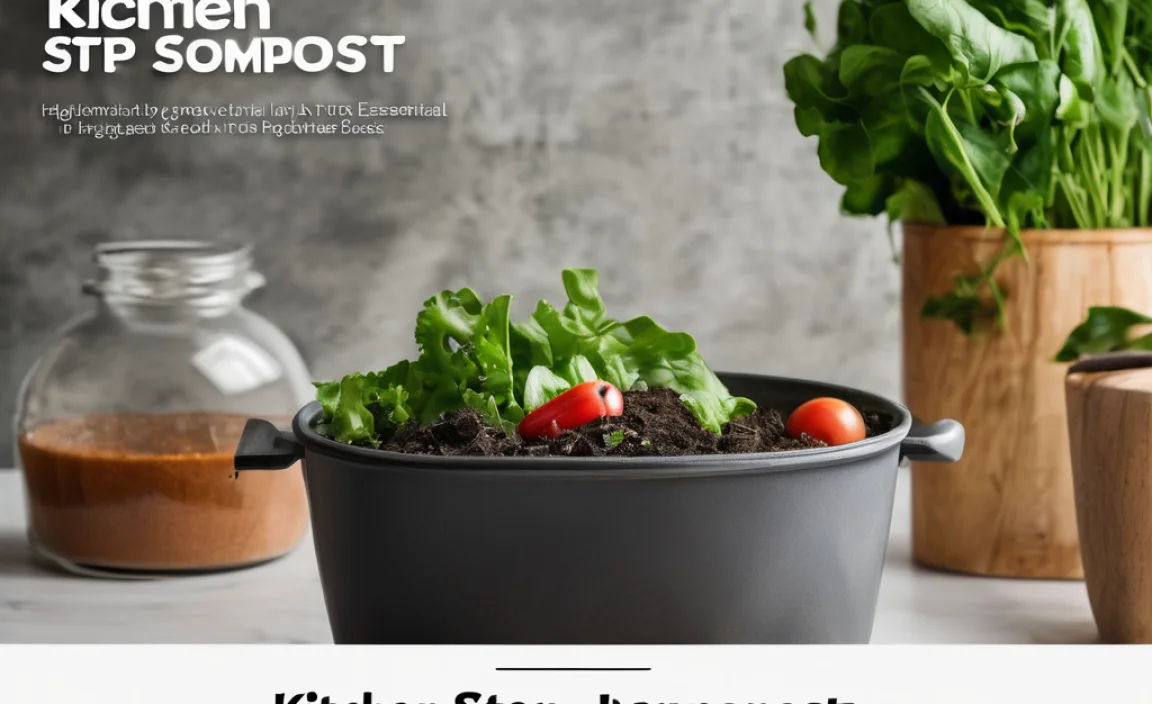Tired of waiting ages for your compost to break down? Wish you could speed up that kitchen scrap transformation into garden gold? You’re not alone! Many of us dream of rich, healthy soil for our gardens, but the traditional composting process can feel like watching paint dry. Imagine turning your waste into powerful plant food in a fraction of the time. It’s totally doable! We’ll walk through exactly how to get those genius compost results, right here in India, without any fuss.
Compost Accelerator India: Genius Results for a Speedy Garden Feast
Hey there, garden lovers and eco-conscious folks! Troy D Harn here from TopChooser, and I’m all about making home projects, especially gardening, as smooth and rewarding as possible. If you’ve ever felt frustrated by slow compost piles or wondered if there’s a simpler way to get that lovely, crumbly stuff for your plants, you’ve come to the right place. Today, we’re diving into the world of compost accelerators, specifically for us here in India. Think of this as your friendly guide to turning kitchen scraps and yard waste into nutrient-rich compost faster than you thought possible. We’ll uncover what these accelerators are, how they work, and most importantly, how you can use them to get those genius results for your garden, easily and effectively.
Why Speed Up Your Compost? The Benefits You Can’t Ignore

Composting is fantastic, no doubt about it. It reduces waste, enriches your soil naturally, and saves you money on fertilizers. But let’s be honest, waiting months for a decent batch of compost can be a drag, especially when your garden is eager for a boost. That’s where compost accelerators come in.
- Faster Decomposition: This is the main event! Accelerators introduce beneficial microbes or provide a more ideal environment for the existing ones, dramatically speeding up the breakdown of organic materials.
- Improved Compost Quality: By breaking down materials more efficiently, accelerators can help create a more uniform and richer compost, free from the larger, recognizable bits of food and plant matter.
- Reduced Odors: A well-functioning, fast-composting pile tends to produce fewer unpleasant smells. Many accelerators can help balance the carbon-to-nitrogen ratio, a common culprit for foul odors.
- Warmer Piles: The accelerated microbial activity generates more heat, which can help kill weed seeds and pathogens, resulting in a safer, more effective compost.
- Ease for Beginners: If you’re new to composting, accelerators can make the process less intimidating. They help ensure your compost pile is actively working, giving you more confidence.
What Exactly is a Compost Accelerator?

Think of a compost accelerator as a helping hand for your compost bin. It’s not magic, but it’s pretty close! These products are designed to give your compost pile a kickstart and keep it running at peak performance. They mainly work in a couple of ways:
- Introducing Microbes: Many accelerators are packed with a potent blend of bacteria, fungi, and other microorganisms that are composting powerhouses. These are the tiny helpers that do the heavy lifting, breaking down your waste.
- Balancing Nutrients: Some accelerators provide key nutrients, often nitrogen, which is essential for the microbes to multiply and work efficiently. Too much carbon (browns) and not enough nitrogen (greens) can slow things down considerably.
- Improving Aeration and Moisture: Certain products can help improve the structure of your compost pile, allowing for better airflow and moisture distribution, which are crucial for the microbes to thrive.
You’ll find them in various forms, from powders and liquids to granular mixes. The best part? Many are readily available right here in India, making the journey to faster compost easier than ever.
Types of Compost Accelerators Available in India

Navigating the options can seem a bit much at first, but it boils down to a few main categories. Knowing these will help you pick the best fit for your composting style and needs here in India.
DIY & Natural Accelerators
Before you even think about buying something, did you know you likely already have some natural accelerators at home or can easily get them?
- Manure: Fresh manure from herbivores (like cow, horse, sheep, or chicken) is teeming with the necessary microbes and nitrogen to kickstart your pile. Make sure it’s well-aged or composted itself for a few months if you’re concerned about pathogens or weed seeds. Cow dung is a very common and effective starter in India.
- Grass Clippings: These are rich in nitrogen and moisture, acting as a great “green” material to balance out dry, carbon-rich “brown” materials like leaves or straw.
- Finished Compost: A scoop or two of mature, finished compost added to a new pile can introduce a diverse range of beneficial microorganisms to get things going.
- Urine: Yes, human or animal urine is a potent source of nitrogen! Dilute it with water (about 10:1 ratio) and sprinkle it onto your compost pile.
- Coffee Grounds and Tea Leaves: These are nitrogen-rich and can also help introduce beneficial microbes.
Commercial Compost Accelerators
These are specially formulated products designed to give your compost pile a significant boost. They are convenient and often very effective.
- Microbial Accelerators: These are the most common type. They contain concentrated blends of bacteria, enzymes, and fungi that are specifically chosen for their composting abilities. Look for products that are specifically marketed as “compost activator” or “compost starter.”
- Nutrient-Rich Additives: Some products focus on adding concentrated nitrogen. This could be in the form of dried blood meal, feather meal, alfalfa meal, or a blend of other nitrogen-rich organic materials. These are excellent for balancing out a compost pile that leans too heavily on carbon-rich “browns.”
- Enzyme-Based Accelerators: These products contain enzymes that help break down complex organic matter more quickly, making it easier for microbes to consume.
When looking for commercial options in India, you’ll often find them labeled as “compost activators” or “compost starters.” Many local garden supply stores, nurseries, and even online marketplaces like Amazon India and Flipkart will stock a variety of brands. It’s always a good idea to check reviews and product descriptions to see what ingredients are used.
How to Use a Compost Accelerator in India: A Step-by-Step Guide

Getting started with a compost accelerator is straightforward. Whether you’re using a commercial product or a natural method, the key is to integrate it properly into your existing compost pile or bin. Here’s how to do it:
Step 1: Prepare Your Compost Pile
Before adding an accelerator, ensure your compost pile is in good condition. This means it should have a healthy mix of “greens” (nitrogen-rich materials like kitchen scraps, grass clippings) and “browns” (carbon-rich materials like dry leaves, cardboard, straw).
- Moisture Check: Your pile should be as damp as a wrung-out sponge. Too dry, and the microbes won’t be active; too wet, and it can become anaerobic and smelly.
- Aeration: Turn your compost pile with a pitchfork or compost aerator to introduce oxygen. This is vital for the aerobic microbes that do the best work. If you have a bin, ensure it has ventilation holes.
Step 2: Choose and Apply Your Accelerator
Using Commercial Compost Accelerators:
Follow the manufacturer’s instructions carefully, as dosages can vary. Generally:
- Read the Label: Always check the packaging for specific application rates and methods.
- Sprinkle or Mix: Most powdered or granular accelerators are sprinkled evenly over the surface of your compost pile or mixed in as you add new materials.
- Liquid Accelerators: If using a liquid, you might dilute it with water as instructed and then spray it over the pile, ensuring even coverage.
- Layering: Some recommend adding a layer of greens, then sprinkling the accelerator, followed by browns, and repeating.
Using Natural Accelerators:
If you’re going the DIY route:
- Manure: Add a layer of fresh or aged herbivore manure (like cow dung) into your pile. Aim for about 10-20% of the total volume of new material.
- Grass Clippings: Mix fresh grass clippings in thin layers with your brown materials. Don’t add thick clumps, as they can mat down and become slimy.
- Finished Compost: Add a shovel or two of mature compost to your new pile.
- Urine: Dilute urine with water (1 part urine to 10 parts water) and sprinkle it over the pile, especially if it seems to be lacking nitrogen or has a lot of browns.
Step 3: Add New Materials
Continue adding your kitchen scraps (fruit and vegetable peels, coffee grounds, tea bags) and yard waste (leaves, grass cuttings, small twigs) as usual. Try to maintain a good green-to-brown ratio.
Step 4: Maintain and Monitor
This is where you’ll see the genius results! Your compost pile should start to heat up within a day or two, especially if you’ve used a good accelerator and have the right moisture and aeration.
- Temperature: A hot compost pile (around 130-160°F or 55-70°C) is ideal for fast decomposition and killing pathogens/seeds. You can feel for heat by putting your hand into the pile, or use a compost thermometer.
- Moisture: Keep checking the moisture level. If it seems too dry, add some water (and maybe more greens or accelerator if it’s sluggish). If too wet, add more browns.
- Turning: Turn the pile every 1-2 weeks to ensure even decomposition and aeration. This helps the accelerator work its magic throughout the entire pile.
Step 5: Harvest Your Compost
Depending on the materials you used, the size of your pile, and the efficiency of your accelerator, you could have finished compost within 4-8 weeks, compared to several months for a traditional pile. Your compost is ready when it’s dark, crumbly, smells earthy, and you can no longer recognize the original materials.
Factors Affecting Compost Accelerator Performance

While accelerators are great, they aren’t a magic bullet that works perfectly on their own. Several factors influence how well they perform:
- Particle Size: Smaller pieces of organic matter break down faster. Chop up large items like corn cobs or thick branches before adding them.
- Green-to-Brown Ratio: The ideal Carbon-to-Nitrogen (C:N) ratio is roughly 25:1 to 30:1. Too much of one or the other will slow decomposition, even with an accelerator.
- Aeration: Oxygen is crucial for the aerobic microbes that produce compost quickly and without odor. Regular turning or using an aerated bin is key.
- Moisture: The microbes need moisture to survive and multiply. Your compost pile should feel like a damp sponge.
- Temperature: While accelerators help generate heat, extreme cold can slow down microbial activity significantly.
- Type of Accelerator: Some accelerators are more potent than others. High-quality, reputable brands or well-chosen natural starters will give better results.
Pros and Cons of Using Compost Accelerators
Like any gardening tool or product, compost accelerators have their ups and downs. Knowing these will help you make an informed decision.
| Pros | Cons |
|---|---|
| Significantly speeds up composting time. | Can be an additional cost if using commercial products. |
| Can lead to higher quality, more uniform compost. | Some commercial products may contain non-organic fillers or synthetic ingredients (check labels). |
| Helps maintain optimal temperature for decomposition. | Effectiveness can vary based on other compost pile conditions (moisture, aeration, C:N ratio). |
| May reduce unpleasant odors by promoting faster aerobic decomposition. | Over-reliance can mask underlying composting problems if basic principles are ignored. |
| Easier for beginners to achieve good results quickly. | Natural alternatives require a bit more knowledge and sourcing of materials. |
Where to Buy Compost Accelerators in India
Finding compost accelerators in India has become much easier over the past few years. You have several reliable options:
- Online Marketplaces: Websites like Amazon India, Flipkart, and niche gardening e-commerce stores carry a wide selection of brands. Search for “compost accelerator,” “compost activator,” or soil conditioners.
- Local Nurseries and Garden Centers: Many larger garden supply stores and nurseries will stock these products, especially in urban and semi-urban areas. It’s often great to get advice from local experts here.
- Agricultural Supply Stores: Stores that cater to farmers might also carry larger-sized or more concentrated compost activators.
- Specialty Organic Stores: Sometimes, stores focusing on organic gardening or sustainable living products will have curated selections of compost accelerators.
When purchasing, always check the ingredients list if you’re looking for organic options. Look for established brands or those with good customer reviews. For instance, you might find brands like “Eco-Enzyme Compost Activator,” “GreenLoop,” or other local manufacturers offering solutions.
You can also explore resources from organizations promoting sustainable agriculture and waste management. For example, the Ministry of Environment, Forest and Climate Change (MoEFCC) in India champions waste management practices, and while they don’t endorse specific products, their guidance often points towards effective biological solutions for composting.
Tips for Genius Compost Results, India Edition
Achieving that perfect compost quickly is all about understanding the basics and giving your pile the best environment. Here are some extra tips tailored for our Indian conditions:
- Use Local Greens: Many kitchen scraps common in Indian households (vegetable peels, leftover rice, lentil water, fruit waste) are excellent “greens.”
- Source Browns Wisely: Dry leaves, coconut coir pith (abundant in many parts of India), shredded newspaper, and cardboard are your friends for “browns.”
- Cow Dung Power: As mentioned, cow dung is a readily available, fantastic natural accelerator in India. Ensure it’s fresh but not from a medicated animal.
- Manage Moisture Carefully: India’s climate can swing from very dry to very humid. Adjust watering and brown material accordingly. In the monsoon, you might need more browns and good drainage. In hot, dry spells, regular watering and covering the pile is essential.
- Chop It Up: Many common Indian kitchen waste items can be large. Chop vegetable peels, coconut shells, and other tough materials into smaller pieces.
- Size Matters: Whether you’re using a bin or a heap, a pile that’s at least 3x3x3 feet (approx. 1 cubic meter) is generally ideal to generate and retain heat effectively.
- Patience with Tough Stuff: Items like citrus peels or tough stalks might take longer, even with an accelerator. Don’t worry if a few bits persist; they’ll eventually break down.
- Buddy Up with Worms (Vermicomposting): For a different but equally effective fast composting method, consider vermicomposting with Earthworms (especially species like the Red Wiggler). This can be done in smaller spaces and yields incredibly nutrient-rich castings. You can even find specialized vermicompost activators.
For more on composting best practices, the Vikaspedia portal, often supported by government initiatives, offers valuable insights into various composting techniques suitable for India.
Troubleshooting Common Compost Problems
Even with accelerators, compost piles can encounter issues. Here’s how to fix them:
Problem: Bad Odor (Ammonia or Rotten Egg Smell)
- Cause: Too many greens (nitrogen) or lack of air (anaerobic conditions).
- Solution: Add more brown materials (dry leaves, cardboard, sawdust). Turn the pile thoroughly to aerate it. If using an accelerator, ensure it’s balanced.
Problem: Pile Isn’t Heating Up or Breaking Down
- Cause: Too dry, not enough greens (nitrogen), or pieces are too large.
- Solution: Add water until it’s like a wrung-out sponge. Add more nitrogen-rich materials (kitchen scraps, grass clippings, manure). Chop larger items. Ensure you’ve added enough accelerator as per instructions.
Problem: Pile is Too Wet and Slimy
.lwrp.link-whisper-related-posts{
margin-top: 40px;
margin-bottom: 30px;
}
.lwrp .lwrp-title{
}.lwrp .lwrp-description{
}
.lwrp .lwrp-list-container{
}
.lwrp .lwrp-list-multi-container{
display: flex;
}
.lwrp .lwrp-list-double{
width: 48%;
}
.lwrp .lwrp-list-triple{
width: 32%;
}
.lwrp .lwrp-list-row-container{
display: flex;
justify-content: space-between;
}
.lwrp .lwrp-list-row-container .lwrp-list-item{
width: calc(25% – 20px);
}
.lwrp .lwrp-list-item:not(.lwrp-no-posts-message-item){
max-width: 150px;
}
.lwrp .lwrp-list-item img{
max-width: 100%;
height: auto;
object-fit: cover;
aspect-ratio: 1 / 1;
}
.lwrp .lwrp-list-item.lwrp-empty-list-item{
background: initial !important;
}
.lwrp .lwrp-list-item .lwrp-list-link .lwrp-list-link-title-text,
.lwrp .lwrp-list-item .lwrp-list-no-posts-message{
}@media screen and (max-width: 480px) {
.lwrp.link-whisper-related-posts{
}
.lwrp .lwrp-title{
}.lwrp .lwrp-description{
}
.lwrp .lwrp-list-multi-container{
flex-direction: column;
}
.lwrp .lwrp-list-multi-container ul.lwrp-list{
margin-top: 0px;
margin-bottom: 0px;
padding-top: 0px;
padding-bottom: 0px;
}
.lwrp .lwrp-list-double,
.lwrp .lwrp-list-triple{
width: 100%;
}
.lwrp .lwrp-list-row-container{
justify-content: initial;
flex-direction: column;
}
.lwrp .lwrp-list-row-container .lwrp-list-item{
width: 100%;
}
.lwrp .lwrp-list-item:not(.lwrp-no-posts-message-item){
max-width: initial;
}
.lwrp .lwrp-list-item .lwrp-list-link .lwrp-list-link-title-text,
.lwrp .lwrp-list-item .lwrp-list-no-posts-message{
};
}

I am passionate about home engineering. I specialize in designing, installing, and maintaining heating, ventilation, and air conditioning systems. My goal is to help people stay comfortable in their homes all year long.



